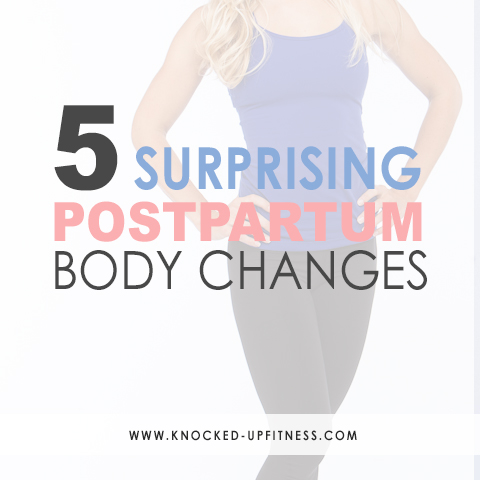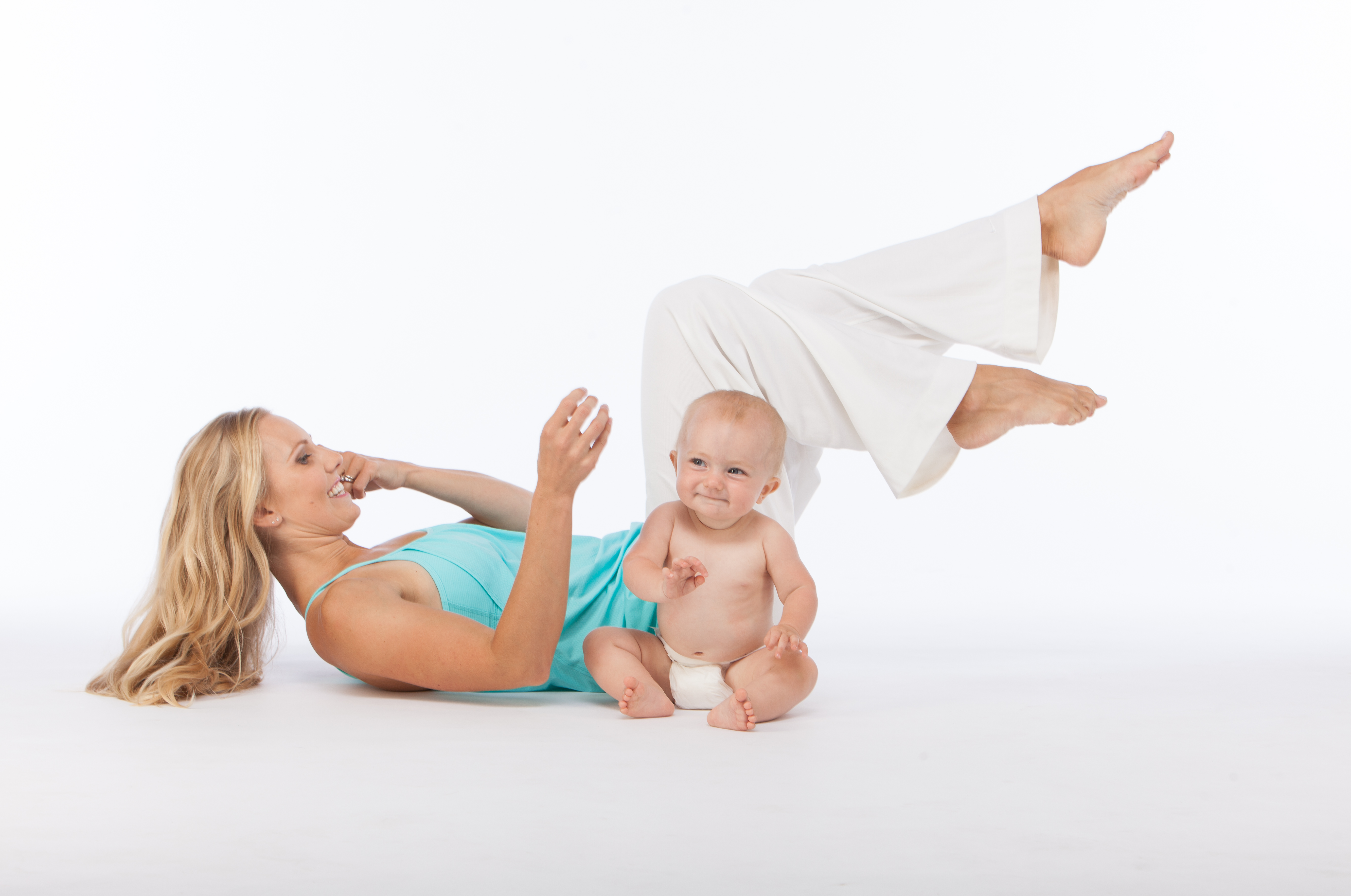After nine months of growing your baby (or babies!) you may not recognize the postpartum body you’re in after delivery. No matter how much you exercise and eat right during your pregnancy, you will probably experience a few (or many) unexpected post-baby body changes. The most important thing to remember is that your body has just done one of the longest, toughest 9 month full time jobs in the world– and one of the best things you can do to recover is to listen to your body!
Wait until you’re physically ready for (and your doctor approves!) exercise, then follow your body’s cues as you ease into postpartum activity. And since sometimes your body can send some pretty crazy messages, here are 5 postpartum changes that you can expect from your body after delivery!

After delivery belly. Many moms think that when the baby is out, their belly should go right back down to normal size, since there is no longer a baby pushing everything around. The reality is that baby was inside a very expanded uterus (it changes from the size of a walnut to the size of a watermelon during pregnancy!). It isn’t uncommon to leave the delivery room, or even leave the hospital, still looking several months pregnant. The good news is that this will reduce over time, especially quickly if you’re nursing or were active during your pregnancy! Remember to take it slow after delivery, until you’ve been approved to exercise, it’s important you allow your body time to heal and bond with baby. Be sure to wait until closer to 10 weeks postpartum to check for diastasis recti.
Breast tenderness & leaking. Whether or not you’re choosing to breastfeed, moms will experience breast swelling and tenderness as your body prepares to make milk for baby. Breastfeeding can promote faster and easier recovery, and tenderness should subside once baby is on a feeding schedule that your body is used to.
Postpartum Incontinence. Many pregnant moms experience not making it the bathroom in time, or laughing a little too hard when baby is sitting on your bladder, but many don’t expect the problem to continue after delivery. Postpartum incontinence is quite common, since pelvic floor muscles are very strained during delivery. This will usually resolve in the first few weeks, and you can speed it along by maintaining a strong pelvic floor with pelvic floor/deep core exercises during pregnancy and starting to re-strengthen your deep core muscles immediately after delivery.
Swelling. You probably knew to look out for signs of preclampsia during pregnancy, but might not know that swelling after delivery is also quite common. Postnatal swelling is usually how the body releases excess fluid retained during pregnancy and should subside within a week.
Mood Changes. Your postpartum hormones can trigger many mood changes– including ‘highs’ when you’re overjoyed and loving the newborn cuddles, to ‘low’ times when everything is just a little overwhelming– and both of these feelings are totally normal in the first few weeks postpartum! Hormone fluctuations are noted by The American Psychological Association, and AmericanPregnancy.org, as factors in postpartum mood changes, and if you’re experiencing mood changes– talk to someone you trust! And remember, exercise can help improve your mood, too!
Sources:





8 Comments
5 postpartum bady changes you can get, if you follow this post.
Can you tell me bicep workouts?